Hotpot, a beloved culinary tradition enjoyed across Asia and beyond, is a communal dining experience centered around a simmering pot of broth and an array of fresh ingredients. While the star of the show is undeniably the bubbling cauldron of flavors, the art of hotpot extends beyond the main event. The right cold dishes—or liangcai as they are known in Chinese cuisine—play a pivotal role in balancing the richness, spice, and heat of the hotpot. These refreshing accompaniments provide texture contrasts, cleanse the palate, and offer a respite from the steamy broth. In this article, we delve into the world of cold dishes that pair perfectly with hotpot, exploring cultural favorites, regional specialties, and innovative twists to elevate your next feast.
The Philosophy Behind Pairing Cold Dishes with Hotpot
Hotpot is a sensory overload in the best possible way: the sizzle of meat and vegetables hitting the broth, the aromatic steam rising to meet your face, and the symphony of flavors as you dip, swirl, and savor. However, without a counterpoint, this intensity can become overwhelming. Cold dishes serve as a palate cleanser, a textural foil, and a bridge between bites. They often incorporate crisp vegetables, tangy dressings, or cooling ingredients like cucumber and mint to reset the taste buds. Additionally, many cold dishes are prepared in advance, allowing hosts to focus on the hotpot without last-minute fuss.
Crunchy and Refreshing Vegetable Salads
Vegetable-based cold dishes are a hotpot staple, offering a crisp, hydrating break from the broth’s warmth. Cucumber salads, for instance, are ubiquitous for their simplicity and effectiveness. Thinly sliced cucumbers tossed in a mixture of rice vinegar, sugar, and a pinch of salt provide a bright, acidic kick that cuts through fatty meats or spicy broths. For added complexity, incorporate sesame oil, crushed garlic, or chili flakes.
Another classic is the smashed cucumber salad, a Sichuan specialty where cucumbers are gently crushed to create jagged edges that absorb dressing more effectively. Marinated in a blend of soy sauce, black vinegar, and Sichuan peppercorns, this dish delivers a numbing, tangy punch that harmonizes with mala-spiced broths.
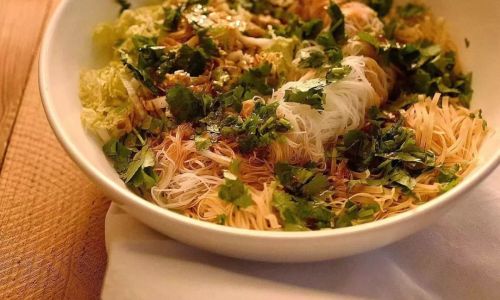
Pickled daikon radish is another refreshing option. Its natural crunch and mild sweetness, enhanced by a quick pickle in rice wine vinegar and sugar, make it ideal for balancing greasy ingredients like fried tofu skins or pork belly.
Tangy and Spicy Pickled Delights
Pickled vegetables, or zhaocai, are a hotpot essential in regions like Chongqing and Chengdu, where fiery broths reign supreme. Paocai, a mix of pickled mustard greens, carrots, and celery, offers a briny, fermented flavor that invigorates the palate. Its sourness cuts through the oiliness of the broth, while the vegetables’ residual crunch provides a satisfying contrast.
Kimchi, though Korean in origin, has found a loyal following in hotpot circles. The fermented cabbage’s spicy, funky profile pairs surprisingly well with pork-based broths, while its effervescent bubbles act as a digestive aid. For a fusion twist, try kimchi cucumber salad, combining the best of both worlds.
Light and Silken Tofu-Based Sides
Tofu, with its neutral flavor and velvety texture, is a versatile cold dish ingredient. Cold tofu with century egg is a Cantonese favorite, featuring silken tofu topped with sliced preserved duck eggs, soy sauce, and cilantro. The century egg’s ammonia-rich creaminess complements the tofu’s mildness, creating a dish that feels both decadent and cleansing.
For a simpler option, cold sesame tofu combines silken tofu with a dressing of tahini, rice vinegar, and a touch of honey. The nutty richness of sesame contrasts beautifully with spicy broths, while the tofu’s coolness soothes the tongue between bites.
Seafood Cold Dishes for Umami Lovers
Seafood-based cold dishes add a briny, umami-rich dimension to hotpot meals. Seaweed salad, made with reconstituted dried seaweed, sesame oil, and a hint of chili oil, offers a slippery texture and oceanic flavor that pairs well with fish balls or seafood broths.
Jellyfish salad is another Asian delicacy, prized for its crunchy texture and subtle salinity. Marinated in a mixture of soy sauce, vinegar, and ginger, it provides a refreshing counterpoint to rich meat dishes. For a heartier option, cold poached shrimp with a dipping sauce of soy sauce, lime, and cilantro adds protein without weighing down the meal.
Hearty Cold Noodles and Grains
Cold noodles offer a satisfying carbohydrate element that won’t compete with the hotpot’s starch options like rice or noodles. Korean bibim naengmyeon (cold buckwheat noodles) in a spicy gochujang broth is a refreshing choice, especially in summer. The noodles’ chewiness and the broth’s chill provide a stark contrast to the hotpot’s warmth.
For a Chinese twist, liangpi (cold skin noodles) made from wheat or rice flour are tossed in a tangy sauce of vinegar, garlic, and chili oil. Topped with cucumber, bean sprouts, and crushed peanuts, this dish adds layers of texture and flavor.
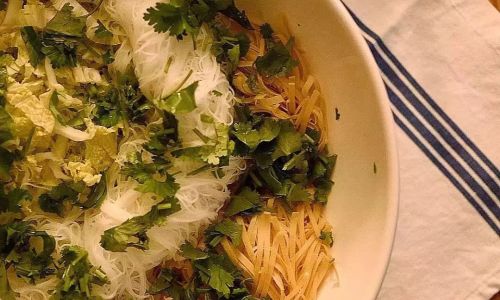
Regional Chinese Cold Specialties
China’s diverse culinary landscape offers a treasure trove of regional cold dishes. In Jiangsu, drunken chicken is a highlight: poached chicken marinated in Shaoxing wine, ginger, and scallions. The meat’s tenderness and the wine’s fragrance make it a luxurious starter.
In Shanghai, smashed cucumber salad with vinegar and garlic is a summer staple, while in Beijing, jellyfish with vinegar and sesame oil is prized for its crisp texture. Sichuan’s 夫妻肺片 (fu qi fei pian, or “husband and wife lung slices*)—though the name is misleading, as it’s typically made with beef offal—is a spicy, numbing cold dish marinated in chili oil, Sichuan pepper, and peanuts.
International Cold Dishes with a Twist
Hotpot’s global appeal has inspired fusion pairings. A Greek salad with feta, olives, and cucumber offers a Mediterranean breeze, its acidity cutting through greasy broths. Tzatziki, a yogurt-based dip, can be served with pita or vegetables for a cooling effect.
For a Japanese touch, sunomono (vinegared cucumber and seafood salad) or chilled tofu with grated daikon and bonito flakes provide minimalist elegance. Even a simple caprese salad with heirloom tomatoes and fresh mozzarella can work, its creaminess balancing spicy broths.
Sweet and Tangy Fruit-Based Sides
Fruit might seem unconventional, but its natural sweetness can reset the palate. Pickled watermelon rind, a Southern Chinese specialty, transforms scraps into a crunchy, tangy treat. Candied lotus root or jicama sticks with lime and chili offer a crisp, refreshing bite.
In Southeast Asia, green mango salad with fish sauce, chili, and peanuts is a hotpot favorite, its tartness cutting through richness. Even a simple platter of sliced pineapple or oranges can provide a juicy, hydrating break.
Tips for Perfect Pairing and Presentation
- Balance Flavors: Pair spicy broths with cooling, acidic dishes (e.g., cucumber salad) and rich broths with tangy, fermented sides (e.g., kimchi).
- Texture Play: Mix crunchy (radishes, cucumbers) with soft (tofu, jellyfish) to keep meals dynamic.
- Color and Aesthetics: Arrange dishes vibrantly—red chili oils, green herbs, and orange carrots create visual appeal.
- Make-Ahead Convenience: Prepare cold dishes a day in advance to save time.
- Dietary Adaptations: Offer vegan options like marinated enoki mushrooms or gluten-free alternatives to soy sauce.
Conclusion: Elevating the Hotpot Experience
The beauty of hotpot lies in its adaptability and communal spirit, but the magic truly comes alive with the right cold dishes. From the fiery crunch of Sichuan pickles to the creamy coolness of sesame tofu, these sides transform a meal into a symphony of flavors, textures, and temperatures. Whether you’re hosting a gathering or enjoying a solo feast, experimenting with cold dishes will deepen your appreciation for hotpot’s balance and complexity. So next time you gather around the simmering pot, remember: the cold accompaniments are not mere afterthoughts, but the unsung heroes of the hotpot table.
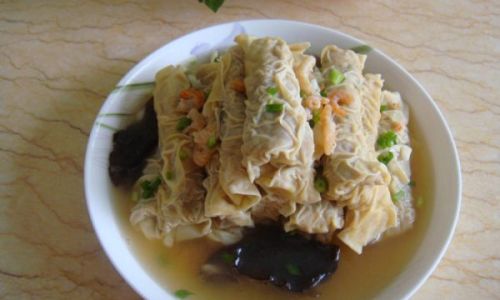
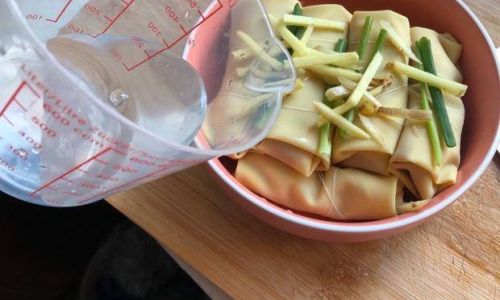

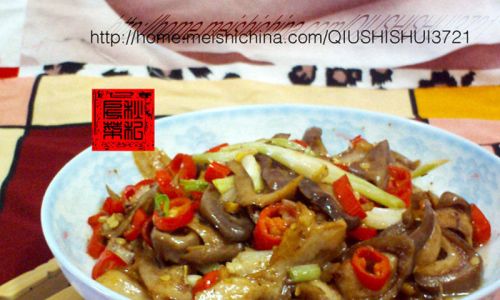
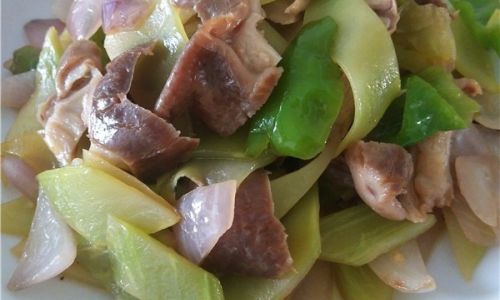
0 comments